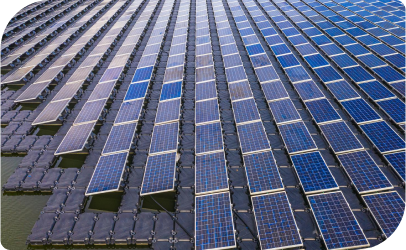Braskem records net revenue of R$41 billion in 2013
The Company's resin sales volume grows by 6%
In yet another challenging year, but with signs of recovery in the world economy, Brazil's GDP growth in 2013 should fall short of the expectations formulated at the start of the year, growing by around 2%. However, domestic consumption of thermoplastic resins expanded 8% from 2012, reflecting the solid performance of the food, automotive, infrastructure and agricultural sectors, as well as the restocking trend in the chain.
Despite the lower-than-expected growth in the domestic economy, the chemical and petrochemical industries benefited from the Brazilian government's decision to lower the PIS and COFINS tax rates on raw material purchases by first and second generation producers, which serve various sectors of economy.
Another important initiative to promote the industry's development was the launch of the Plan to Promote Competitiveness in the Plastics Chain (PIC), which was structured by Braskem working in conjunction with the manufacturing industry. The initiative includes an injection by Braskem of R$80 million in 2014 in the form of commercial and structural support for manufacturers, which includes actions to stimulate exports of manufactured plastic goods, incentives for innovation and support for training programs.
In this context, and driven by programs to capture operational efficiency gains, investments in technology and innovation, and advances in its expansion plans, Braskem's performance improved in the period. The Company set new records for the production of ethylene (3.4 million tons) and polyethylene (2.6 million tons), while resin sales volume grew by 6% in the Brazilian market to reach 3.7 million tons.
"Initiatives like the tax relief measure are extremely positive, but additional measures are still needed to improve the competitiveness of the industry as a whole that work to offset the high feedstock and energy costs, deficiencies in logistics and excessively undervalued local currency," said Braskem CEO Carlos Fadigas.
Braskem's net revenue came to R$41 billion, representing growth of 13% on the prior year. Earnings before interest, tax, depreciation and amortization (EBITDA) amounted to R$4.8 billion, increasing 22% in the period. In U.S. dollar, EBITDA grew by 11% to US$2.2 billion. Some of the factors influencing this performance were the growth in domestic sales volume; the recovery in international resin and petrochemical spreads; the tax relief for raw material purchases; and the depreciation in the Brazilian real.
Net income amounted to R$15 million in the fourth quarter and R$507 million in 2013, reflecting the better operating performance in the period and the adoption, as of May 10, of hedge accounting, which better translates the effects of exchange variation on the Company's debt and on its profit and loss. Based on this result, Management is proposing the distribution of R$483 million in dividends.
Expansion - Braskem's investments in the year amounted to R$2.7 billion, or 58% more than in 2012. The investments went mainly to maintaining assets, which consumed 50% of the total, and to the construction of the integrated petrochemical complex in Mexico developed through a joint venture with Idesa, which received 40%. The project reached physical completion of 58% by year-end and is scheduled to start operations in 2015.
Another highlight in 2013 was the agreement signed in December between Braskem and Solvay for the acquisition of a controlling interest in Solvay Indupa, a PVC producer. Once concluded, the transaction will increase Braskem's PVC production capacity by 42% in Brazil. "This step strengthens the Company's international industrial footprint, making it the fourth largest PVC producer in the Americas, while also strengthening its market position in a resin that is essential to the construction and infrastructure sectors," commented Fadigas. In the case of caustic soda, the transaction will boost Braskem's annual production capacity to 890 kton, which represents expansion of over 60%.
Alert to the opportunities provided by the competitiveness of shale gas and aligned with its growth program, Braskem worked together with investors to analyze the feasibility of an integrated project for the production of ethylene in West Virginia in the United States, where Braskem is already the leader in the polypropylene market. If the feasibility of the project, called the Appalachian Shale Cracker Enterprise (Ascent), is confirmed, the role of each participant and the business model will be submitted for approval to the boards of directors of the companies. Braskem is expected to preserve its financial capacity to implement other strategic projects in Brazil, in particular the Rio de Janeiro Petrochemical Complex (COMPERJ).
In line with its strategy to strengthen the production chains of the petrochemical complexes, the Company also signed a memorandum of understanding with Styrolution to assess a joint venture in Brazil in which its equity interest will be 30%. The joint venture aims to produce, in Camaçari, Bahia, styrenics specialties and the copolymers acrylonitrile butadiene styrene (ABS) and styrene acrylonitrile (SAN) to substitute imports of these products into the local market. These specialties serve Clients in the home appliance and automotive industries.
"The realization of this and other expansion investments in Brazil is based on the assumption that the industry will continue to enjoy the guaranteed supply of feedstocks in volumes and at costs that are compatible with global competitive dynamics, which are heavily influenced by the low cost of U.S. shale gas," said Fadigas.
Related News
News
More news
Braskem and Katoen Natie Partner on a Logistics Project in Singapore
![[JP] Braskem and Katoen Natie Partner on a Logistics Project in Singapore](/portal/europe/arquivos/listas/15762/capa.jpg?v=1)
[JP] Braskem and Katoen Natie Partner on a Logistics Project in Singapore

From Air to Plastics: Norsk e-Fuel and Braskem Partner to turn Captured Carbon into Long-Lasting Products

Accelerating the Transition to Renewables: Braskem's I'm greenTM bio-based Supports TE Connectivity's Sustainable Heat Shrink Tubing Innovation

With Braskem's I'm greenTM bio-based Polyethylene, Balsam Hill Made the World's First Plant-Based Plastic Christmas Trees


 Braskem Global
Braskem Global
 Braskem Idesa
Braskem Idesa
 Braskem USA
Braskem USA
 Braskem Europe
Braskem Europe









